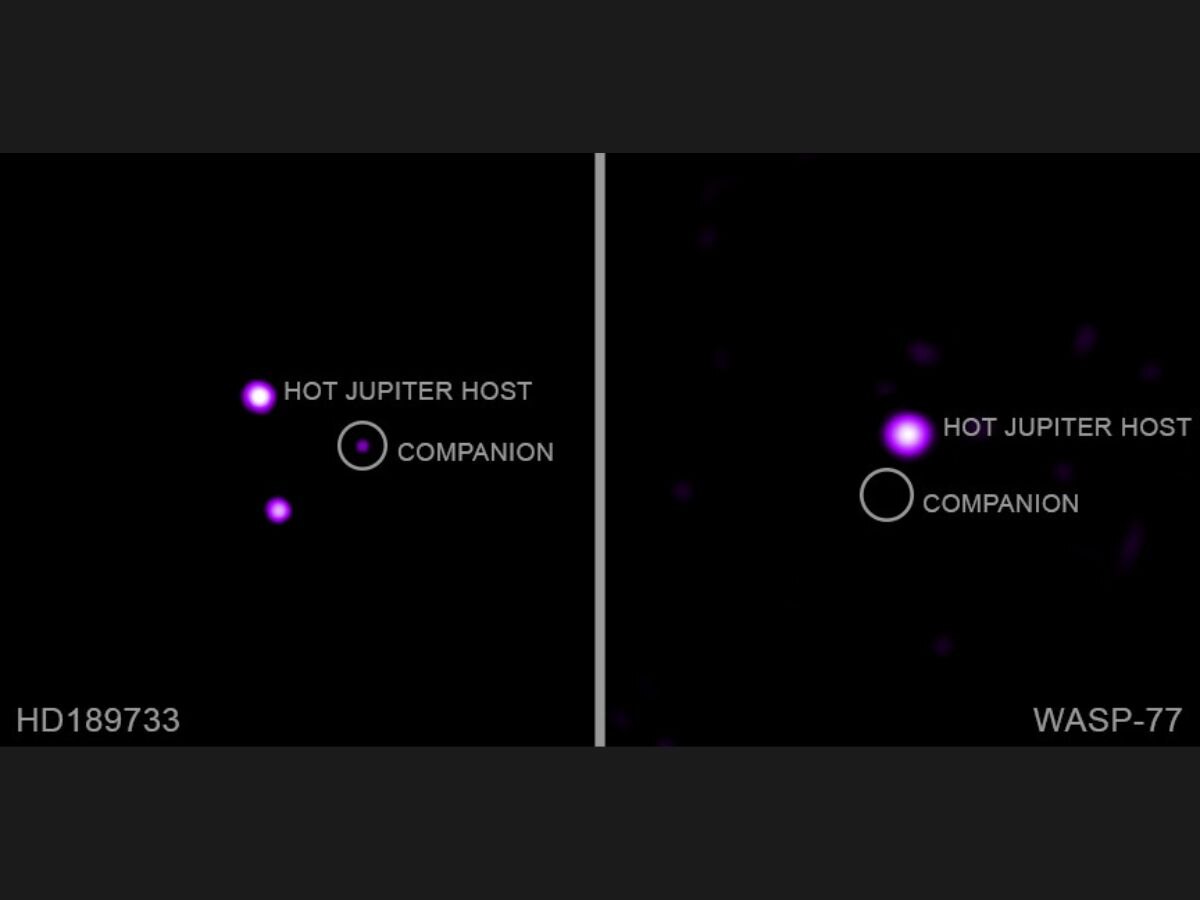Planets Have Anti-Ageing Properties, Can Force Stars To Act Younger Than Their Age, NASA's Chandra Finds
This is the best evidence to date that some planets apparently slow down the ageing process for their host stars.

Planets have anti-ageing properties and can force stars to act younger than their age, a new study has found. This is the best evidence to date that some planets apparently slow down the ageing process for their host stars. The study analysed multiple systems using NASA's Chandra X-ray Observatory.
The anti-ageing property of 'hot Jupiters', which are gas giants orbiting a star at Mercury's distance from the Sun or closer, has been seen before. However, the study marks the first time the anti-ageing property of planets has been systematically documented. This is the strongest test yet of this exotic phenomenon.
Planets have anti-ageing properties and can force stars to act younger than their age, a new study has found. This is the best evidence to date that some planets apparently slow down the ageing process for their host stars. The study analysed multiple systems using NASA's Chandra X-ray Observatory.
The anti-ageing property of 'hot Jupiters', which are gas giants orbiting a star at Mercury's distance from the Sun or closer, has been seen before. However, the study marks the first time the anti-ageing property of planets has been systematically documented. This is the strongest test yet of this exotic phenomenon.
What makes a star appear young?
A hot Jupiter can potentially influence its host star by tidal forces. This causes the star to spin more quickly than if it did not have such a planet. The rapid rotation can make the host star more active and produce more X-rays. These are signs that are generally associated with stellar youth.
The study describing the findings was recently published in the Monthly Notices of the Royal Astronomical Society.
In a statement released by NASA, Nikoleta Ilic, who led the new study, said the new study makes it clearer that hot Jupiters are really making the stars they orbit act younger than they are.
What happens as stars age?
However, there are many factors that can determine a star's vitality. As stars age, they will slow their rotation and activity and undergo fewer outbursts. Astronomers have found it difficult to identify whether a star is unusually active because it is being affected by a close-in planet, or because it is actually young. The reason behind this is that it is challenging to determine the ages of most stars.
New study looked at a binary star system
The new Chandra study tried to solve this problem by looking at a double-star or binary system where the stars are widely separated but only one of them has a hot Jupiter orbiting it. Just like human twins, the stars in binary systems form at the same time. According to NASA, the separation between the stars is much too large for them to influence each other, or for the hot Jupiter to influence the other star. Therefore, the researchers chose the planet-free star in the system as a control subject.
Katja Poppenhaeger, a co-author on the paper, said it is almost like using twins in a study where one twin lives in a completely different neighbourhood that affects their health.
Poppenhaeger added that by comparing one star with a nearby planet to its twin without one, astronomers can study the differences in behaviour of the same-aged stars.
Stars near a hot Jupiter were more active than those without one
In order to determine how 'young' a star is acting, the team used the amount of X-rays. They studied almost three dozen systems in X-rays to search for evidence of planet-to-star influence. The final sample had 10 systems observed by Chandra and six by the European Space Agency's XMM-Newton. Several systems were observed by both. The astronomers found that the stars with hot Jupiter's tended to be brighter in X-rays. Therefore, those stars were more active than their companion stars without hot Jupiters.

Marzieh Hosseini, another co-author on the paper, said in the previous cases, there were some very intriguing hints. But now, researchers finally have statistical evidence that some planets are indeed influencing their stars and keeping them acting young.
Hosseini added that hopefully, future studies will help uncover more systems to better understand this effect.
Astronomers compared two binary star systems. The hot Jupiter in one of the systems was HD189733, and that in the other system was WASP-77. It was observed that the star with a planet nearby was more active than the companion star.







































